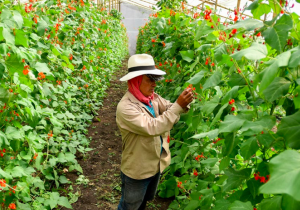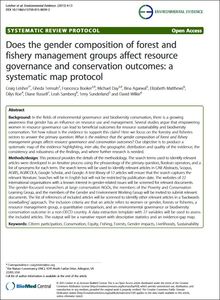The Nature Conservancy is the leading conservation organization working around the world to protect ecologically important lands and waters for nature and people.
We address the most pressing conservation threats at the largest scale. Thanks to the support of our more than 1 million members, we’ve built a tremendous record of success since our founding in 1951:
- We've protected more than 119 million acres of land and thousands of miles of rivers worldwide — and we operate more than 100 marine conservation projects globally.
- We are impacting conservation in 69 countries — protecting habitats from grasslands to coral reefs, from Australia to Alaska to Zambia. See where we work.
- We address threats to conservation involving climate change, fresh water, oceans, and conservation lands. Learn how we're responding.
Resources
Displaying 1 - 5 of 9The Business of Planting Trees
Across the world, companies with a wide range of business models are making money from planting trees. These restoration enterprises are proving that restoring degraded forests and agricultural lands is not only good for the planet, but a good business opportunity as well.
Stabilizing and Rebuilding Myanmar’s Working Forests: Multiple Stakeholders and Multiple Choices
Myanmar is one of the most biologically diverse and ecologically productive nations on Earth. Its forests support the livelihoods of more than 36 million people, while the forestry sector employs more than
500,000 people and is one of seven sectors promoted under Myanmar’s National Export Strategy. Yet, after decades of unsustainable exploitation, driven by arbitrary revenue targets, mismanagement, illegal logging and, more recently, large-scale conversion to agricultural crops, Myanmar’s forests are badly damaged.
Does the gender composition of forest and fishery management groups affect resource governance and conservation outcomes: A systematic map protocol
In the fields of environmental governance and biodiversity conservation, there is a growing awareness that gender has an influence on resource use and management. Several studies argue that empowering women in resource governance can lead to beneficial outcomes for resource sustainability and biodiversity conservation. Yet how robust is the evidence to support this claim?
Securing crucial biodiversity, carbon and water stores in the Congo Basin Peatlands by enabling evidence based
General
The Lac Télé/Lac Tumba landscape is a unique ecosystem shared between both Kongos. The landscape stores enormous amounts of carbon and harbors important populations of endemic species. The project supports the governments and stakeholders to mitigate climate and development impacts on biodiversity, water and carbon. The project contributes to a biodiversity-friendly development pathway through effective integrated land-use plans, improved sustainable livelihood approaches, methods, data and tools, addressing peatland and water monitoring, the National Investment Plans, and cross-sectoral coordination. This ultimately supports the conservation and sustainable management of the peatlands. Countries benefit of South-South cooperation to chart a new pathway to the sustainable management of their peatlands, for the benefit of people, and conserving its ecosystem services. The current undeveloped status of the region offers a critical opportunity to promote evidence based land use planning and improve natural resource management.






